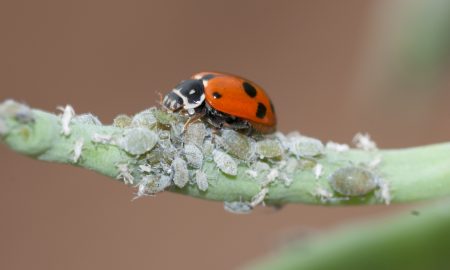Protecting crops from slugs requires an integrated, year-round approach.
A triple La Niña event has favoured the build-up of slugs. With sowing of winter crops approaching, if not already underway, protecting establishing crops from slugs this autumn will be crucial part of a larger management plan for many growers.
In this article we’ll look at the key areas of slug management relevant at this time of year.
The backdrop for 2023
Slugs are typically a pest in high-rainfall zones where annual rainfall exceeds 550 mm, and a sporadic pest where rainfall falls to 450 mm. It’s not unusual for growers in those wetter regions to apply slug baits directly after sowing, during establishment to protect seed and seedlings.
Above average spring rainfall for three years, brought about by a triple La Niña, has seen favourable spring breeding conditions for slugs.
So, while La Niña has officially come to an end, as with 2022, the increase in slugs previously could see them continue to be a problem in regions that don’t traditionally suffer from slug damage, as well as in typical slug-prone regions.
Slug monitoring during autumn
Last year we touched on the importance of springtime slug monitoring to assess risk for 2023.
As well as spring, monitoring is also useful during autumn. This is primarily because for baits to be effective slugs must be actively searching for food on the soil surface, which is generally when volumetric surface soil moisture is above 25%.
Furthermore, autumn monitoring can help to determine the species present; not all slug species found in paddocks are pests. For example, the striped field slugs (Ambigolimax spp. ) can be found in paddocks but aren’t considered crop pests.
For information on key pest species and identification, see ‘Slugs in Crops: The Back Pocket Guide’.
To assess if slugs are actively feeding, they can be monitored before sowing with bait lines:
Strategic slug baiting
Baits are a crop protectant and are recommended to protect emerging seedlings and young crops, particularly canola, which is the most susceptible winter crop species to slug feeding in the south-east.
Metaldehyde and iron-based baits are registered to control slugs in Australian broadacre crops, and there are differences in how products are formulated. According to Dr Michael Nash, the product of choice should depend on the circumstances in which it is applied.
Adapted from Nash (2022 & 2023), some factors to consider when selecting and using a product include:
Calibration of application equipment and pellet uniformity
When baits are distributed evenly, it improves the chance of a slug encountering a pellet. Patchy control can occur when application equipment has not been calibrated and/or the product used has a high amount of variability in weight and size.
Pellet size
Slug baits vary in size; smaller pellets may result in slugs failing to eat enough active ingredient to kill them.
Active ingredient concentration
Slug baits also vary in the amount of active ingredient that they contain, which influences the total amount of product that needs to be applied: that is the rate per hectare.
Bait persistence
Some bait products persist longer after application and rainfall than others. Baits that are more resistant to degradation may allow for a longer period of protection, when slugs are active. Bran-based products often require re-application after heavy rainfall: that is greater than 20 mm.
Bait supply
Baits may need to be reapplied to areas if consumed rapidly after application. This is to ensure that enough bait is present relative to the slug population size in the paddock and to also account for ‘hot spots’ of feeding activity.
Attractiveness of bait
Most baits contain ingredients that lead slugs to preferentially feed on the bait over seedlings.
Palatability
Baits with feeding enhancers encourage slugs to eat enough active ingredient to kill them. Hardened baits which include glue to improve rain-fastness may decrease palatability.
Use cultural controls (if compatible)
Depending on compatibility with broader farm operations, there are also some cultural management techniques that may be used this autumn to help protect seedlings from slugs.
These include:
- controlling weeds
- early sowing of vigorous canola cultivars to achieve faster establishment to six leaf stage
- rolling seed beds after sowing, before applying bait
- cultivation, to improve germination and retard slug activity; and
- stubble burning, to improve light interception and reduce seedling diseases.
For more information on these cultural controls and current practices for slug management from a year-round, integrated approach see the GRDC Slug Control Fact Sheet.
Acknowledgements
Thanks to Dr Michael Nash for reviewing and contributing to this article.
Cover image: Photo by Andrew Weeks, Cesar Australia





